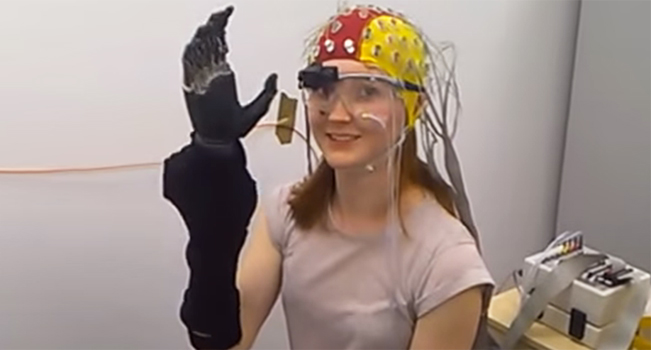Prosthetics
We explore the sensorimotor control of prosthetic limb use. In particular we are interested in how visuo-motor control develops in patients with newly acquired prosthetic limbs, and how we can expedite this process to improve coordination and dexterity.
We also adopt prosthetic limb simulators, to enable us to explore these ideas in an experimental setting (see paper 1).

We have also provided the first direct evaluation of the cognitive burden of using a prosthetic limb by measuring EEG and eye-tracking. We then explore how gaze training might alleviate this burden and improve learning (see paper 2).
Publications
- Examining the Spatiotemporal Disruption to Gaze When Using a Myoelectric Prosthetic Hand. J. V. V. Parr, S. J. Vine, N. R. Harrison & G. Wood. Journal of Motor Behavior (2017)
- Visual attention, EEG alpha power and T7-Fz connectivity are implicated in prosthetic hand control and can be optimized through gaze training. J. V. V. Parr, S. J. Vine, M. R. Wilson, N. R. Harrison & G. Wood. Journal of NeuroEngineering and Rehabilitation 16:52 (2019)



